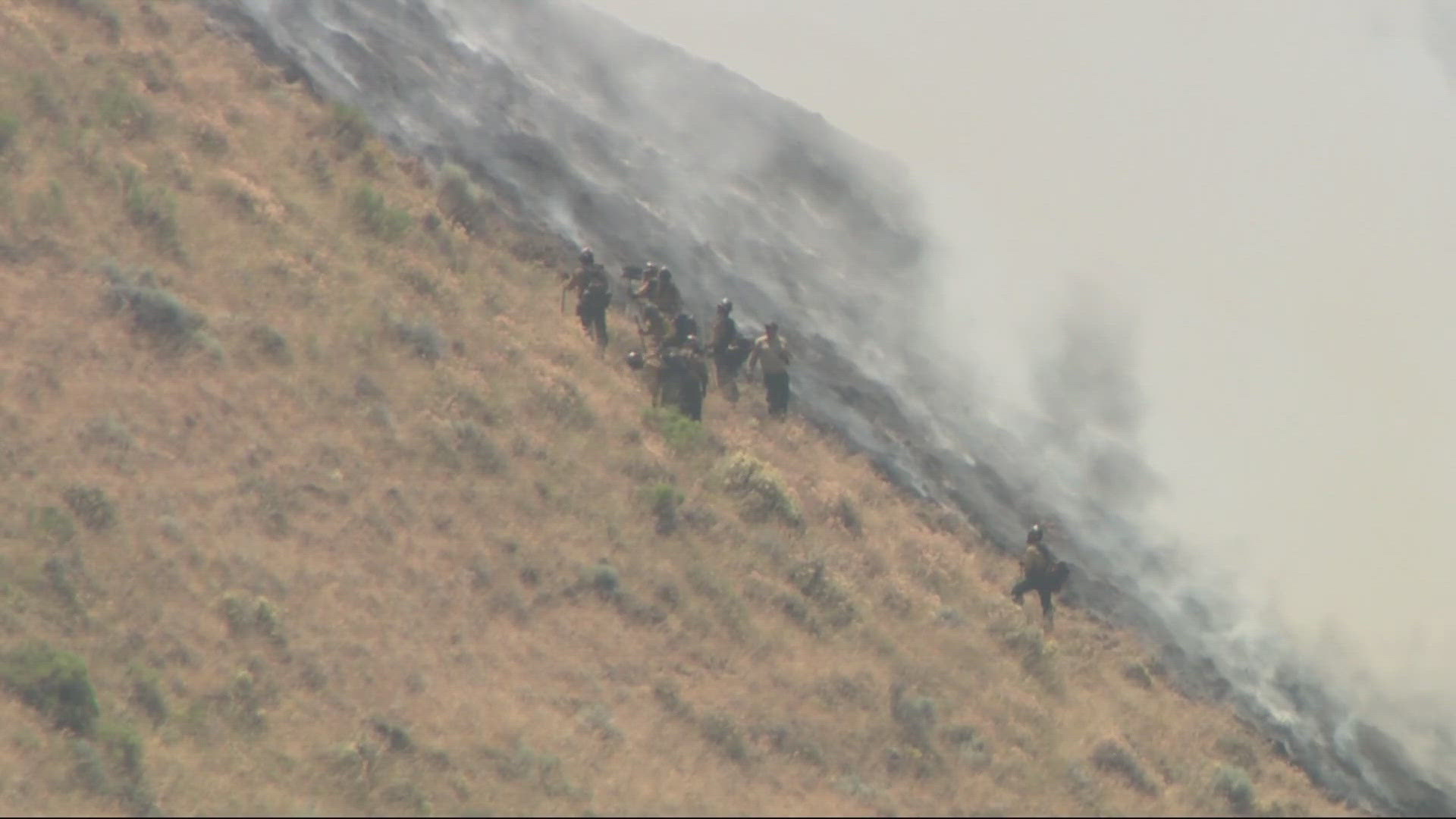TYGH VALLEY, Oregon — The Larch Creek Fire in Wasco County was first spotted on Tuesday and has grown to over 13,000 acres by Friday. Hot and dry conditions, along with gusting winds, have made the fire hard to contain.
“You get it over in one spot, then it wants to do something else, and then the wind shifts on you 360 degrees, like they did yesterday on us,” said Kyle McMann, a fire chief with Marion County.
Chief McMann and a firefighting crew from Marion County arrived in Wasco County on Thursday, finding the steep, uneven terrain as another variable in the fight.
“This is pretty rugged country. We’ve got rock faces, hills, wheat and grasses all over the place. At the end of the day, wildland fires are unpredictable. Mother Nature is going to do what she wants to do with us,” he said.
READ MORE: Larch Creek Fire rapidly burning in Wasco County was 'human caused'; evacuation zones expanded
Donna McCoy of Pine Hollow was one of those at an evacuation location near Hood River on Friday. She was told by the Wasco County Sheriff to leave her home on Thursday.
“He came around with a bullhorn: 'This is the Wasco County Sheriff’s Office. You’ve been raised to a Level Three; it’s time to go,'” McCoy told KGW.
McCoy said she grabbed what she could fit in her car and left as quickly as she could with one of her cats in the car. She left behind most of her possessions and her other cats.
“It’s not fun. I don’t care what anybody says; it’s not fun," she said. "It’s absolutely scary — not knowing what you will go back to, if you will go back to anything.”
Officials are hoping Friday could be a turning point in the fight. Resources have continued to pour into Wasco County, resources that McCann says have helped tremendously.
But danger still remains for people in the line of the fire, and fire crews on the front lines.
“There is still a threat," McMann emphasized. "There is still a threat to the community; that’s why we are here. That’s why they keep bringing in more resources. There are homeowners still here — that’s on our mind, my mind. I have to worry about myself, my crews and the residents that are in there.”
No homes have been lost to the fire so far, even though nearly 1,000 homes are located in the Level 3 evacuation zone.
Here's what evacuation levels mean
Level 1 Notice - Be Ready: Residents should be aware of the danger that exists in their area and monitor local media outlets for information. Residents with special needs should take note and begin making arrangements to evacuate. Evacuations at this time are voluntary.
Level 2 Notice - Be Set: This level indicates there is significant danger to your area, and residents should either voluntarily relocate to a shelter or outside of the affected area, or if choosing to remain, to be ready at a moment's notice. Emergency services cannot guarantee that they will be able to notify you if conditions rapidly deteriorate.
Level 3 Notice - Go Now: Danger to your area is current or imminent, and you should leave immediately. Listen to local media and watch for emergency personnel who may be coming by to give further instructions regarding the evacuation.

